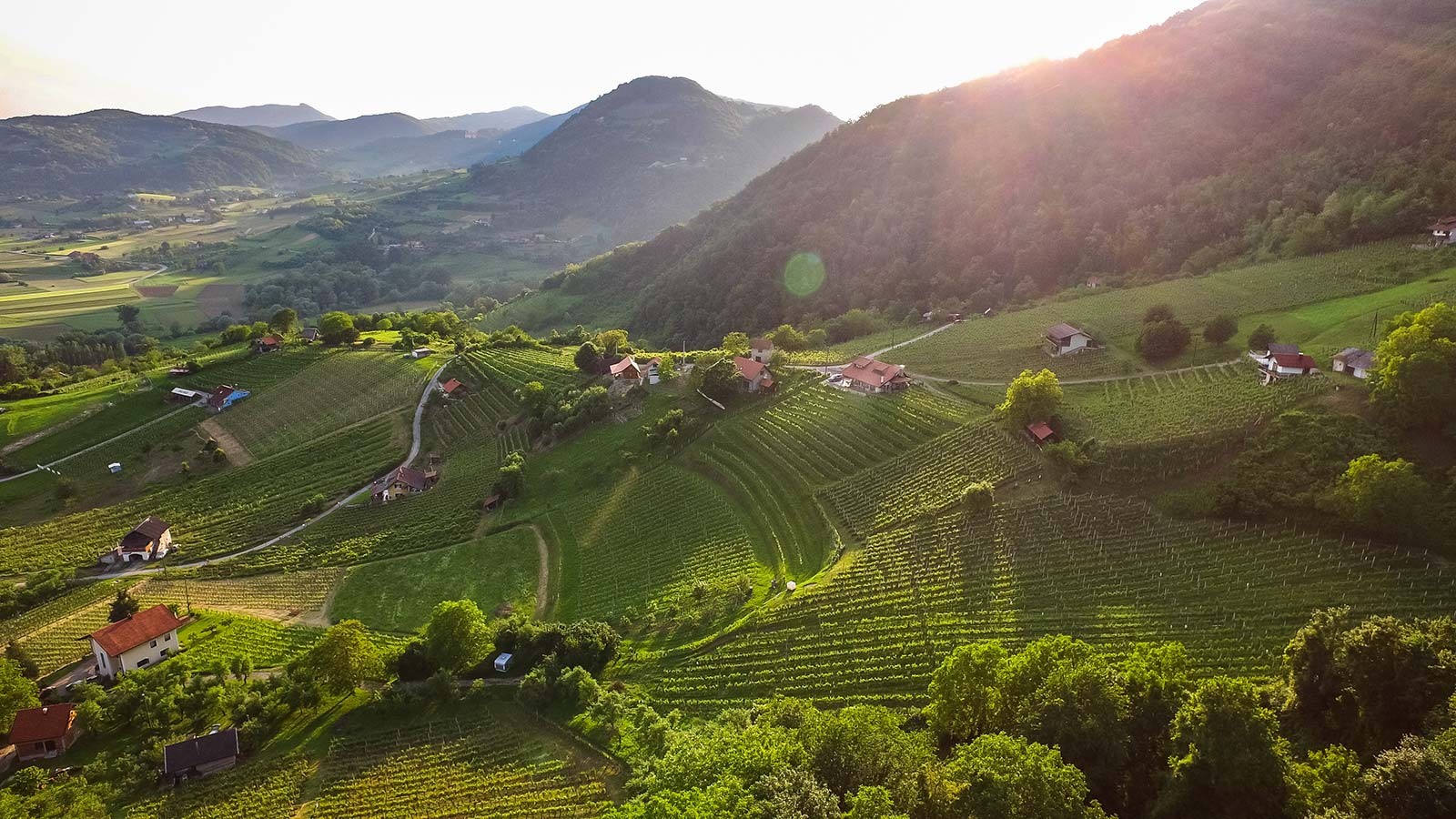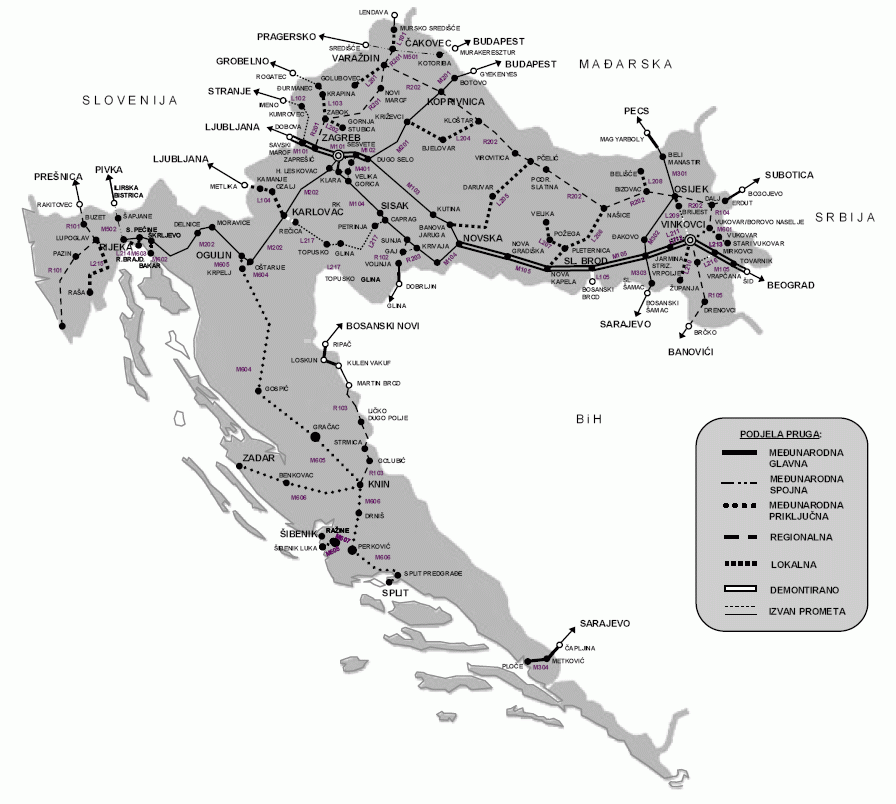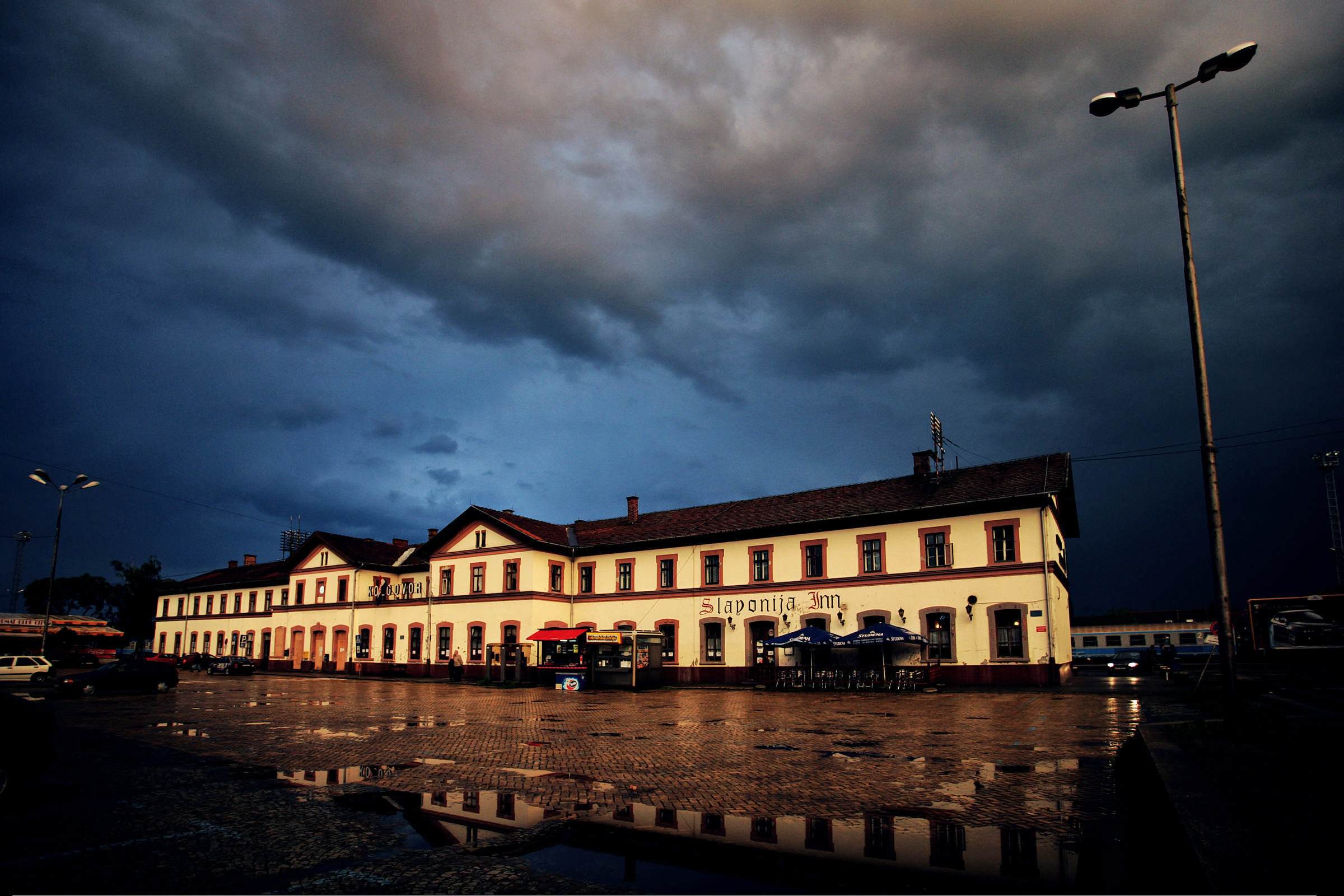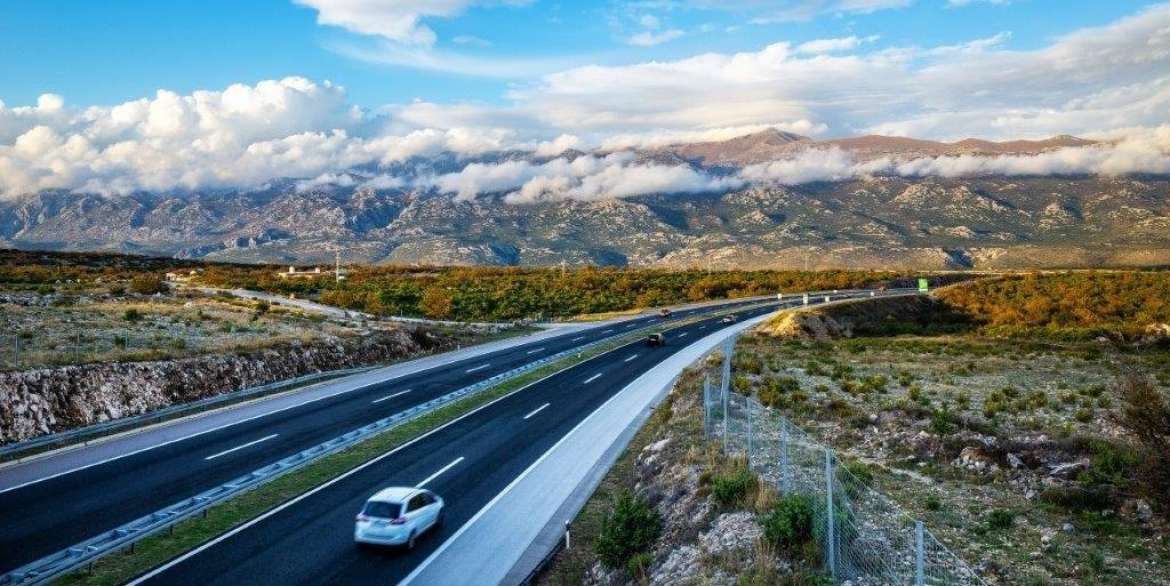American-Croatian Entrepreneur Boris Miksic Makes €7 Million Investment
October the 12th, 2021 - American-Croatian entrepreneur Boris Miksic has made an enormous seven million euro investment, and although the Croatian public still thinks of him in a political light, there's much more to this businessman than many notice, unless you're from Slavonia...
As Poslovni Dnevnik/Sergej Novosel Vuckovic writes, a very long time has passed since businessman Boris Miksic was a rival to politicians Stjepan Mesic and Jadranka Kosor back in the 2005 presidential election, becoming a sensation in the number of votes won, behind these two the third of thirteen candidates, but even today this episode seems to be the first association with him the public has.
For many people, on the other hand, in Eastern Croatia, he was and remains above all, an entrepreneur, innovator, and an employer, which he became known as with the beginning of his business development in Croatia way back in the early 2000s.
In Beli Manastir, Boris Miksic has had a Ecocortec polymer processing plant for about fifteen years now, which boasts anti-corrosion protection technology, which he patented in 1977 over in the USA in the Cortec Group. At the end of the year, the construction of a new factory in the Business Zone of Beli Manastir is now set begin. Boris Miksic's own investment stands at more than seven million euros.
''As part of the new factory (which will stand on land covering 5,000 square metres, with the hall spanning 2000 square metres itself), there will be a modern line for recycling plastic packaging and a plastic processing plant for further extrusion in our existing factory and in the factories of our partners in Japan, Turkey, Italy, France, Germany and Spain. Another three-layer extrusion line will also be installed in the existing hall and a new line for making plastic bags intended for industrial packaging will be there,'' explained the businessman.
Raw materials from renewable sources
After the construction of the plant in the Ecocortec production and logistics complex, about a hundred people will work there. According to Boris Miksic, Beli Manastir will be the largest factory with such an assortment in all of Europe and the second in the entire world, after the American Cortecs. It should be operational by the end of 2022 if there are no major delays in the supply chain. So far, Miksic has invested more than 20 million euros in the Republic of Croatia.
The entire Cortec Group is, by the way, still the world's largest manufacturer of so-called VCI packaging (which protects against corrosion) sold in hundreds of countries worldwide, and among the clients are some major players in the automotive and electronics industry (such as Mercedes, Toyota, Ford, Bosch, IBM, GE, Airbus, ExxonMobil, and Croatia's very own Koncar).
"With a new range of patented products based on raw materials from renewable sources, such as PLA plastics, we're positioned as leaders in the circular economy," added Boris Miksic.
The need for anti-corrosion protection didn't abate even during the coronavirus pandemic, on the contrary, business results last year and so far in 2021 were, according to Miksic, solid, and "in Croatia, they were above expectations". Revenues in 2020, according to Poslovna Hrvatska (Business Croatia), amounted to close to 50 million kuna, with profits soaring to an impressive 5.78 million kuna.
"Ecocortec had sales growth of 25 percent, which is just proof that my investment in my homeland was well thought of and even better performed thanks to excellent management teams and the dedicated work of all employees," said Boris Miksic. 90 percent of everything done in Slavonia is exported - to the EU, USA, China, Indonesia, Turkey, and Russia. Due to the lockdowns of 2020, the supply was somewhat disrupted, but more than 98 percent of the deliveries to customers was still carried out properly and on time.
"Our competitive advantage is vertical integration, so we didn't really have any delays," added Boris Miksic.
Recently, he further strengthened his position, his company Cortecros took over the Crosca/INA logistics centre in Kastel Sucurac in Dalmatia. They have been using this facility since way back in 1998 but now it is completely theirs and they have some very ambitious plans for it.
"Over the past few years, we've started the production of ecological anti-corrosion products for the market of Southeastern Europe, which we're expanding to the EU, Russia and the Middle East, thus doubling our capacities," Miksic announced.
Although he has very much distanced himself from the often murky world of Croatian politics, at least actively, when asked about the assessment of the entrepreneurial climate in Croatia in relation to what he found upon arriving here, the owner of Ecocortec recalls the motto of his political activity: ''when the economy breathes, society flourishes''. He added that he'd like to see Croatia dragged up from being at the very bottom of the EU in many cases.
''I've always had a vision of Croatia as an ecological oasis in the heart of Europe,'' concluded Boris Miksic.
For more, follow our business section.
Continental Croatia Trains: Inland Opens Up With Green Travel
October 3, 2020 - With charter airlines in a state of flux and Croatia Railways beginning a renewal of their fleet in Slavonia, are continental Croatia trains the eco-friendly and best way to unlock the inland's amazing potential?
Everything changes. Nothing stays the same. Even before 2020 arrived, lifestyles and trends were headed in new directions. Eco-tourism and agro-tourism were two of the fastest-growing areas within the travel sector, this behaviour change a response to concerns about the environment. And nowhere in the country stands better poised to take advantage of this interest than continental Croatia. Impossibly pretty Zagorje - the region lies just north of Zagreb and is accessible by continental Croatia trains © Ivo Biocina / Croatia National Tourist Board
Impossibly pretty Zagorje - the region lies just north of Zagreb and is accessible by continental Croatia trains © Ivo Biocina / Croatia National Tourist Board
From the impossibly pretty hills of Zagorje, the peaceful rivers of Karlovac county and the hidden vineyards that surround the capital Zagreb to the vast Pannonian flatlands that stretch to Slavonia, Baranya, Vukovar-Srijem and beyond, the varied topography of continental Croatia is wild, exciting and - by many - wholly undiscovered.
This is land where agriculture and nature thrive side by side, where the stresses of modern-day existence ebb away as you readjust to a way of life that would look mostly familiar to the people who lived here centuries ago. These are places where you can truly be at one with yourself and with your surroundings. In continental Croatia, you often find yourself in an environment that is both timeless and traditional, yet wholly contemporary in regards to its ecological aspirations. And you're never far away from an exciting city environment that you can dip into on a whim – not just Zagreb, but Osijek, Slavonski Brod, Karlovac, Sisak and Varaždin too. To those who really know and love Croatia, Osijek is simply unmissable. It is both the capital of and the doorway to Slavonia and Baranya and should be more accessible by continental Croatia trains. Sadly, international transportation links to the city by air are also quite poor. Improvements in accessibility to Slavonia and Baranya by rail and road are imminent © Romulić & Stojčić
To those who really know and love Croatia, Osijek is simply unmissable. It is both the capital of and the doorway to Slavonia and Baranya and should be more accessible by continental Croatia trains. Sadly, international transportation links to the city by air are also quite poor. Improvements in accessibility to Slavonia and Baranya by rail and road are imminent © Romulić & Stojčić
Unlocking the incredible potential of continental Croatia relies on getting the message out there and facilitating travel to these regions
In recent TCN features we have detailed that motorways within Croatia are among the best in Europe - once you're inside Croatia, travelling by car (or bus) between the regions couldn't be easier. We have also seen evidence of the huge interest in travelling here by rail and using continental Croatia trains.
Of all the modern methods of long-distance travel, rail is by far the most eco-friendly. What better way to begin an environmentally friendly holiday than by arriving on continental Croatia trains? When the country wisely decided to prioritise its internal motorway system, a modern and fast inter-regional rail network was put on the back burner. Nowhere suffers greater from this decision than continental Croatia. The Croatian rail network © Croatian Official Document uploaded to Wikipedia by Epepe
The Croatian rail network © Croatian Official Document uploaded to Wikipedia by Epepe
The only high-speed line that currently exists in Croatia links Rijeka to Budapest, via Zagreb and Koprivnica. Planned improvements hope to cut journey times between Zagreb and its nearest coastal city to an hour. Same as it ever was - Rijeka was the first Croatian city to be connected internationally by rail. That line also ran into the heart of Austro-Hungary and facilitated upper-class travel to places like Opatija. But does it best benefit the country to invest in more links to the coast or in continental Croatia trains? Well, the inland is not being ignored. Upgrades are being made to continental Croatia trains. This impressive beast actually services the country's coast. But would more investment in the continental Croatia trains network better service more people and help unlock the inland to tourists? Around 70% of the country's inhabitants live in continental Croatia © HŽPP
This impressive beast actually services the country's coast. But would more investment in the continental Croatia trains network better service more people and help unlock the inland to tourists? Around 70% of the country's inhabitants live in continental Croatia © HŽPP
The rail link between Zagreb and Slavonski Brod is so historic that it was once part of the four routes of the Orient Express. It has been maintained to a standard where you can make a relatively quick journey from the capital to Vinkovci via Slavonski Brod. The same cannot be said for rail travel to Osijek, the access point to Baranya and much more. So slow is the connection between Osijek and Zagreb that it has been possible over recent times to reach the Slavonian capital quicker by taking the train to Vinkovci, then the bus to Osijek, rather than travelling direct by rail. Osijek train station. A renovation to the building is planned for the near future © Romulić & Stojčić
Osijek train station. A renovation to the building is planned for the near future © Romulić & Stojčić
However, in February this year, Croatian Railways introduced four direct daily lines between Slavonski Brod and Osijek. And there will be a new tilting train line that will run between Zagreb to Osijek on Friday afternoon and from Osijek to Zagreb on Sunday afternoon, facilitating student travel. On October 15, the first low-floor train will run between Osijek and Vinkovci as an additional part of the renewal of their continental Croatia trains fleet in Slavonia. The welcome return of Croatia's second-oldest international rail line - linking Osijek to Pécs in Hungary, via Beli Manastir and Baranya - was introduced in late 2018. A motorway stretch between Metković and Dubrovnik, integrating the Pelješac bridge and the Croatian segment of the European corridor are the final big remaining projects in a three-decade-long undertaking to give Croatia one of the best motorway networks in Europe. Should Croatia's rail network be next? © Hrvatske Autoceste
A motorway stretch between Metković and Dubrovnik, integrating the Pelješac bridge and the Croatian segment of the European corridor are the final big remaining projects in a three-decade-long undertaking to give Croatia one of the best motorway networks in Europe. Should Croatia's rail network be next? © Hrvatske Autoceste
Access to Slavonia and Baranya will also be massively facilitated upon completion of the European corridor, which will connect North Europe to the Adriatic. Starting in Budapest, it necessitates the building of a bridge near Beli Manastir. Thereafter the motorway will pass by Osijek, connect to the Zagreb-Slavonia motorway near Lipovac, then pass through Bosnia and its capital Sarajevo and on to Ploče.
The removal of budget airline flights to the airport in Osijek remains a hindrance to attracting many international visitors to Slavonia and Baranya. However, with charter airlines facing the greatest uncertainty of all modes of transport at the current time, though their return is a must, it is perhaps now an ambition that should remain more long term. For the immediate future, improvements to rail travel look to be a brilliant way of opening up not only Slavonia, Baranya and Vukovar-Srijem, but also an eco-friendly access point capable of serving the whole of untapped continental Croatia.
For the latest travel info, bookmark our main travel info article, which is updated daily.
Read the Croatian Travel Update in your language - now available in 24 languages
Beli Manastir Getting a New Pool Complex
The town pools in Beli Manastir in the Baranja region will again open their doors, but with a brand new design. Visitors will be able to swim there starting next summer – children will use a slide to enter the children’s pool, while the adults will even have a proper beach reserved for them, reports Lokalni.hr on November 13, 2018.
By adopting a decision on borrowing, the Town Council has approved a 6.5 million kuna loan for the purpose of reconstruction of town pools. The loan will be provided by the Croatian Postal Bank, which has offered the best conditions. The loan must still be approved by the Ministry of Finance and the government, after which the local authorities will start the public procurement procedure.
“The total investment is estimated at 9 million kuna, and the exact cost of the works will be determined after the public procurement procedure is completed. We plan to build a restaurant complex near the pools, which is something that is also needed by the town of Beli Manastir,” say sources from the town council.
The town pools in Beli Manastir were first opened in the late 1980s, when their construction was financed by the then Municipality of Beli Manastir and the Belje company. After the reintegration of this territory back into Croatia, they were given to several companies as a concession. They have been closed since 2016 and are currently in a dilapidated condition.
“During the session of the Town Council, a conceptual solution for the pool complex was presented, significantly different from the existing one. The existing children’s pool will receive new overflow channels and a slide. The pool complex will also get a pool with additional amenities, such as lying and sitting massage, a beach, waterfalls and a water slide.
A recreational swimming pool and all accompanying facilities are also planned. A wooden pergola will serve as a sunbathing area, and the complex will also get new changing rooms and sanitary facilities. Citizens of Beli Manastir and their visitors will thus get a modern and functional complex.
When it was just opened before the Homeland War, the complex had a large Olympic and a children's pool, while a smaller baby pool was added later. According to the current plans, the large pool will be replaced by the two aforementioned pools. The children’s pool will remain, so the complex will have three pools.
The new and reconstructed pools should be completed by the start of the 2019 summer season, provided there are no unexpected delays.
For more on the Baranja region, click here.
Translated from Lokalni.hr (reported by Suzana Lepan Štefančić).
Despite Being 99.7% Complete, Longest Bridge in Croatia Still Unusable
Another Croatian construction story turns stagnant.
''Croatia is Successful in Using Most Important EU Programs''
Minister Gabrijela Žalac and Commissioner Corina Creţa held a dialogue with citizens.
Baranja Student Speaks: ''I'm The Only Student In The Class''
How does it feel to be the only student in your entire class? Meet 11 year old Adrian from Baranja...
Germany to Move Part of Its Car Industry to Croatia?
An economic boost for Slavonia?
What Hungary's Wire Fence Means to Wildlife on the Croatia Border
(Photo copyright Janos Horvat)
Hungary's controversial fence - the cost to wildlife.
Beli Manastir This Morning: A Local Resident Reports
TCN's Luka Vuylsteke was out and about in Beli Manastir this morning after the first wave of arrivals had left for Hungary.
TCN Reports on the Situation in Beli Manastir
We are delighted to welcome Luka Vuylsteke to the TCN. Luka lives in Beli Manastir and has this report on the situation there today.


